- Why Planting Strawberries in Autumn is a Smart Choice
- 1. Better Root Development
- 2. Increased Winter Hardiness
- 3. Early Spring Harvest
- 4. Higher Yield
- Selecting the Right Variety
- 1. Day-Neutral vs. June-Bearing
- 2. Cold Hardiness
- 3. Disease Resistance
- 4. Taste and Texture
- Preparing the Soil for Rooting
- 1. Choose the Right Location
- 2. Clear the Area
- 3. Test the Soil
- 4. Loosen and Prepare the Soil
- Planting Techniques for Successful Rooting
- 1. Choose the Right Variety
- 2. Prepare the Soil
- 3. Planting Depth and Spacing
- 4. Watering and Mulching
- 5. Fertilizing
- 6. Protection from Frost
- 7. Regular Maintenance
- Proper Mulching and Winter Protection
- 1. Apply a Thick Layer of Mulch:
- 2. Avoid Using Plastic for Mulching:
- 3. Protect the Crowns:
- 4. Remove Mulch in Spring:
- Essential Watering and Fertilization Tips
- Pruning and Trimming in Autumn
- 1. Remove Dead Leaves and Runners
- 2. Trim Excess Foliage
- 3. Thin Out Plants
- 4. Mulch with Straw
- Preventing Pests and Diseases
- Harvesting and Enjoying the Fruits of Your Labor
- 1. Harvesting:
- 2. Storing:
- 3. Enjoying:
- 4. Caring for Your Plants:
- Question-answer:
- Is it possible to plant strawberries in autumn?
- What are the key tips for successful rooting of strawberries in autumn?
- How should I prepare the soil for planting strawberries in autumn?
- Should I water the strawberries after planting in autumn?
- What can I do to protect strawberries during the winter?
- Video: Planting Strawberry Runners, Tips and Strategies In 2020
When it comes to planting strawberries, many gardeners think of doing so in the spring or summer. However, autumn can also be an ideal time to start growing these delicious fruits. By planting strawberries in the fall, you give them a head start in establishing strong roots and preparing for the winter months ahead. In this article, we will share four key tips for successful rooting and wintering of strawberries when planting them in autumn.
Tip 1: Choose the Right Strawberry Varieties
Before you start planting strawberries in the autumn, it is important to choose the right varieties that are suited for this season. Look for varieties that are known for their tolerance to cold temperatures and have a short dormancy period. Some popular choices include ‘Albion’, ‘Seascape’, and ‘Everest’. These varieties will ensure better survival rates and a more productive harvest.
Tip 2: Prepare the Soil and Site
In order to ensure successful rooting and wintering of strawberries, it is crucial to prepare the soil and site properly. Start by selecting a well-drained location that receives ample sunlight. Clear away any debris or weeds, and improve the soil quality by adding organic matter, such as compost or well-rotted manure. A pH level between 5.5 and 7 is ideal for strawberries.
Tip 3: Plant with Care
When planting strawberries in the autumn, it is important to handle the plants with care. Gently remove them from their containers and place them in the prepared soil, ensuring that the crown is above the surface. Make sure to space them properly, leaving about 12-18 inches between each plant. Water the plants thoroughly after planting to help them settle in.
Tip 4: Provide Winter Protection
Winter can be harsh on strawberry plants, so providing proper protection is essential for their survival. Mulch the plants with a layer of straw or pine needles to insulate the soil and protect the roots from freezing temperatures. You can also cover the plants with row covers or cloches to shield them from cold winds and frost. Remember to remove any covers in the spring once the risk of frost has passed.
By following these four key tips, you can ensure successful rooting and wintering of strawberries when planting them in autumn. With proper care and attention, your plants will establish strong roots and be well-prepared for the colder months, resulting in a bountiful harvest of delicious strawberries in the following spring and summer.
Why Planting Strawberries in Autumn is a Smart Choice
Planting strawberries in autumn can be a smart choice for several reasons. Here are four key reasons why you should consider planting strawberries during this time of year.
1. Better Root Development
When you plant strawberries in autumn, they have ample time to develop a strong and extensive root system before winter sets in. The colder temperatures during autumn encourage the growth of strong and well-established roots, which are crucial for the plant’s overall health and ability to absorb nutrients.
2. Increased Winter Hardiness
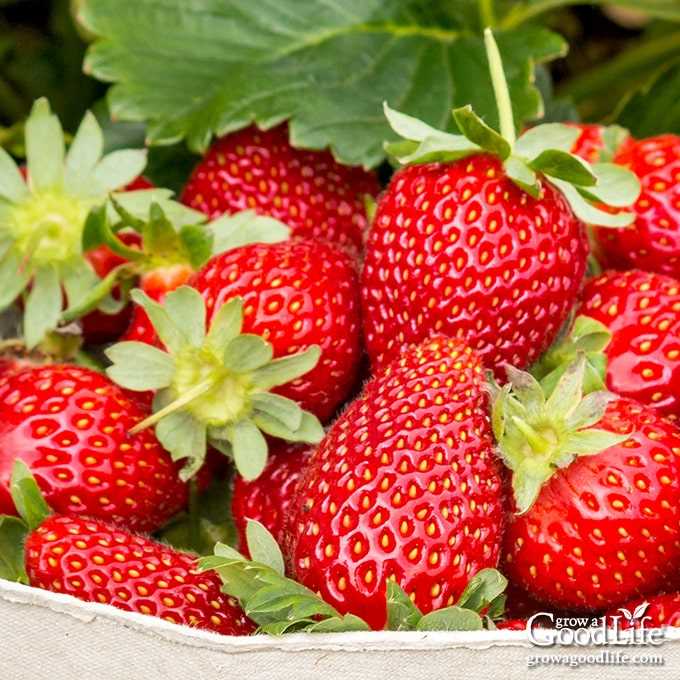
By planting strawberries in autumn, you give them a head start on the winter season. The cool weather conditions allow the plants to gradually acclimate to the colder temperatures, making them more resilient to winter frost and freeze events. This increased winter hardiness results in better survival rates and healthier plants in the spring.
3. Early Spring Harvest
Another benefit of planting strawberries in autumn is the possibility of an early spring harvest. By establishing the plants in the fall, they are already well-rooted and can start producing flowers and fruits earlier in the growing season. This means you can enjoy sweet, homegrown strawberries earlier than if you had planted them in the spring.
4. Higher Yield
Planting strawberries in autumn often leads to higher yields compared to spring planting. The plants have more time to establish themselves and develop a strong root system, which translates into better nutrient absorption and overall plant health. This results in larger, juicier berries and a more abundant harvest.
In conclusion, planting strawberries in autumn offers several advantages, including better root development, increased winter hardiness, early spring harvest, and higher yields. Consider giving your strawberries a head start by planting them in the fall for a more successful growing season and a bountiful harvest.
Selecting the Right Variety
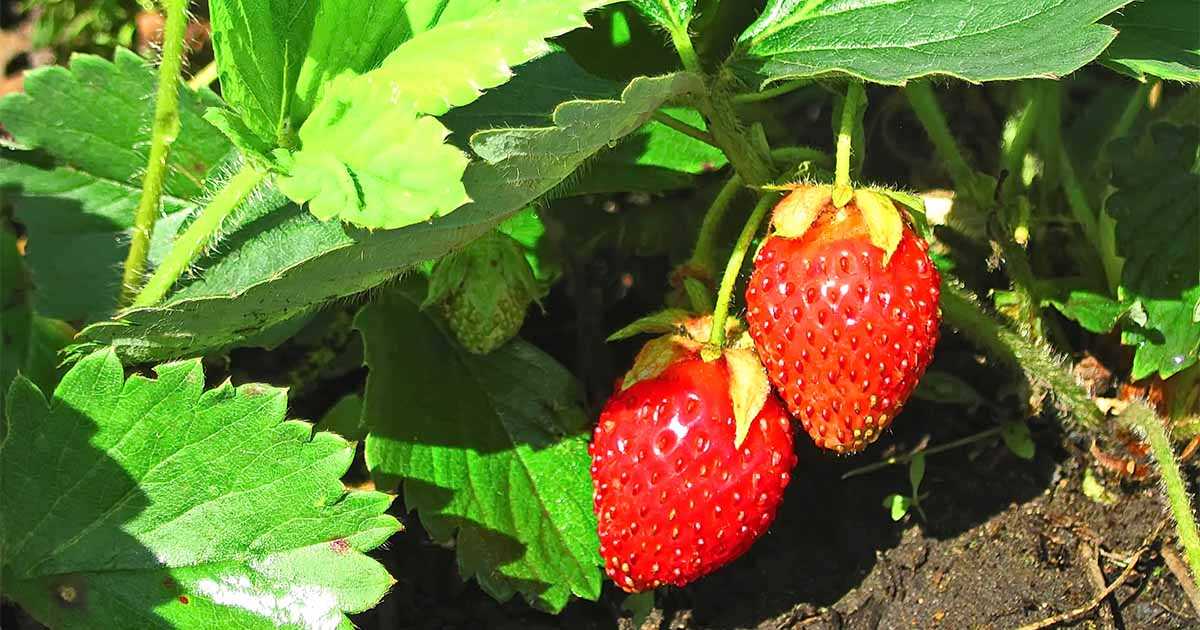
When it comes to planting strawberries in autumn, selecting the right variety is crucial for successful rooting and wintering. There are many different varieties of strawberries available, each with its own characteristics and requirements. Here are some key factors to consider when choosing the right variety:
1. Day-Neutral vs. June-Bearing
One important factor to consider is whether you want day-neutral or June-bearing strawberry plants. Day-neutral varieties produce fruit throughout the growing season, while June-bearing varieties produce a single large crop in early summer.
If you want a constant supply of strawberries, day-neutral varieties are a good choice. However, if you prefer a large harvest at once, June-bearing varieties might be a better option.
2. Cold Hardiness
In colder regions, it’s important to choose strawberry varieties that are cold-hardy. These varieties are able to survive freezing temperatures and continue to grow in the spring. Look for varieties that are labeled as suitable for your climate zone.
Some cold-hardy varieties to consider include ‘Allstar’, ‘Earliglow’, and ‘Sparkle’.
3. Disease Resistance
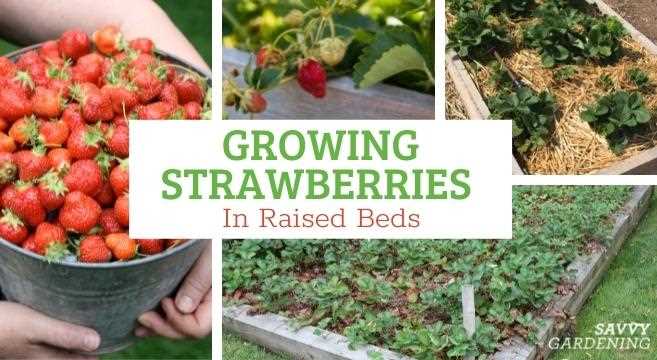
Another important factor to consider is disease resistance. Some strawberry varieties are more resistant to common diseases such as powdery mildew and gray mold.
Resistant varieties can help reduce the risk of disease and improve the overall health of your strawberry plants. Look for varieties that are labeled as disease-resistant.
4. Taste and Texture
Lastly, don’t forget to consider the taste and texture of the strawberries you want to grow. Different varieties have different flavors and textures, ranging from sweet and juicy to tart and firm.
It’s a good idea to do some research and read reviews to get an idea of the taste and texture of different varieties. You might also consider visiting a local farmer’s market or fruit stand to sample different types of strawberries.
By considering these factors and selecting the right variety, you’ll increase your chances of success when planting strawberries in autumn. Happy gardening!
Preparing the Soil for Rooting
Before planting strawberries in autumn, it is essential to prepare the soil properly to ensure successful rooting. The following tips will help you create an ideal growing environment:
1. Choose the Right Location
Select a sunny spot in your garden that receives at least six to eight hours of direct sunlight. Strawberries thrive in full sun and require this amount of light for proper growth and development.
2. Clear the Area
Remove any weeds, grass, or unwanted vegetation from the chosen strawberry patch. These competing plants can take away the nutrients and moisture needed for strawberry plants to thrive. Use a garden fork or shovel to dig up the weeds and remove their roots.
3. Test the Soil
Conduct a soil test to determine its pH level and nutrient composition. Strawberries prefer slightly acidic soil with a pH range between 5.5 and 6.5. If the soil pH is too high, you may need to amend it with elemental sulfur or other acidifying agents. Additionally, incorporating organic matter such as compost or well-rotted manure can improve the soil’s fertility and drainage.
4. Loosen and Prepare the Soil
Using a garden fork or a tiller, loosen the soil to a depth of at least 8 to 10 inches. Break up any large clumps, remove rocks, and smooth the surface with a rake. This step ensures that the strawberry roots can penetrate easily and spread throughout the soil.
By following these tips, you can create an ideal growing environment for your strawberry plants and set them up for successful rooting and wintering.
Planting Techniques for Successful Rooting
1. Choose the Right Variety
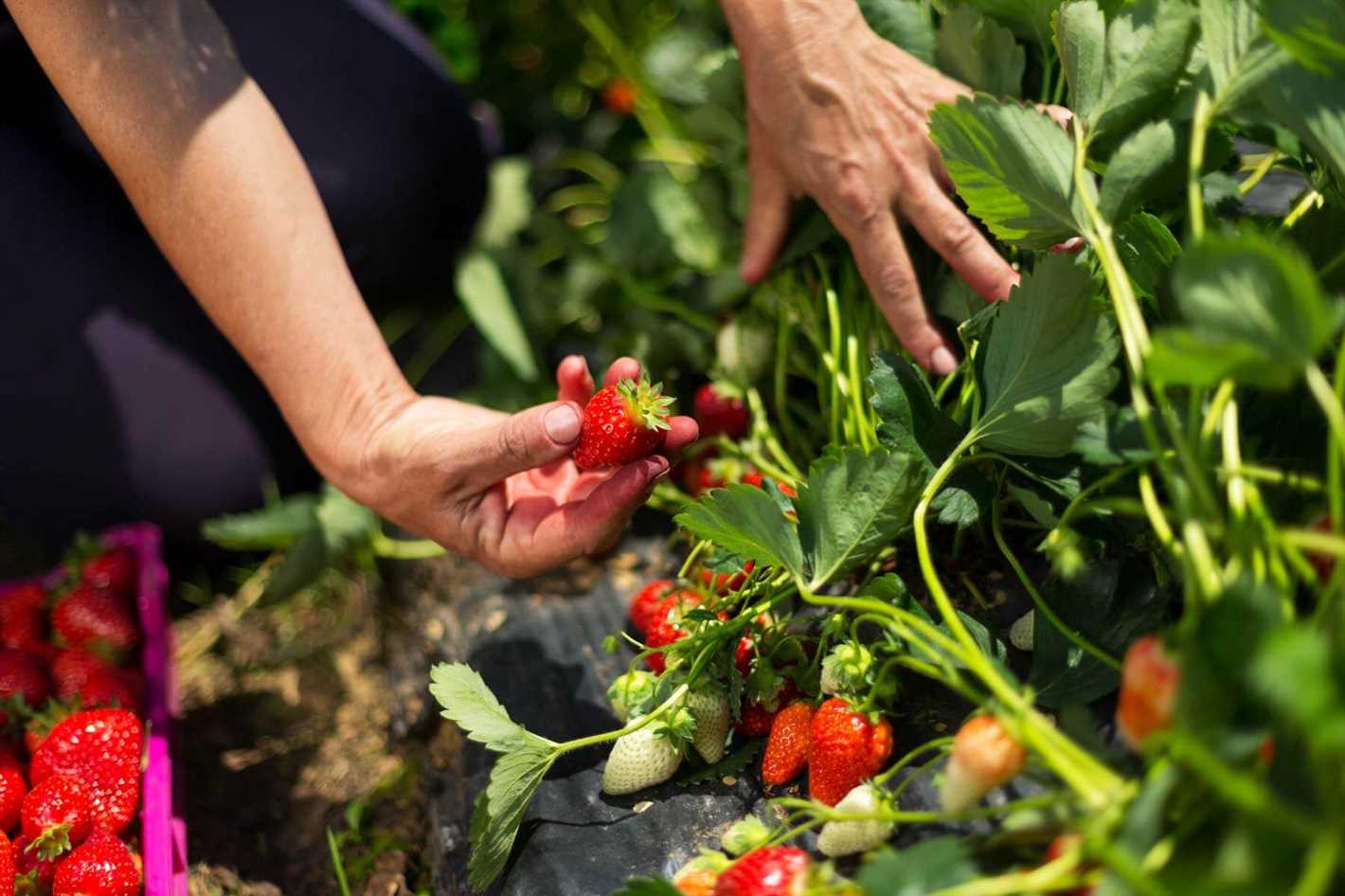
Selecting the right strawberry variety is crucial for successful rooting. Consider factors such as climate, soil type, and available space in your garden. Some popular varieties for autumn planting include ‘Chandler’, ‘Seascape’, and ‘Everest’.
2. Prepare the Soil
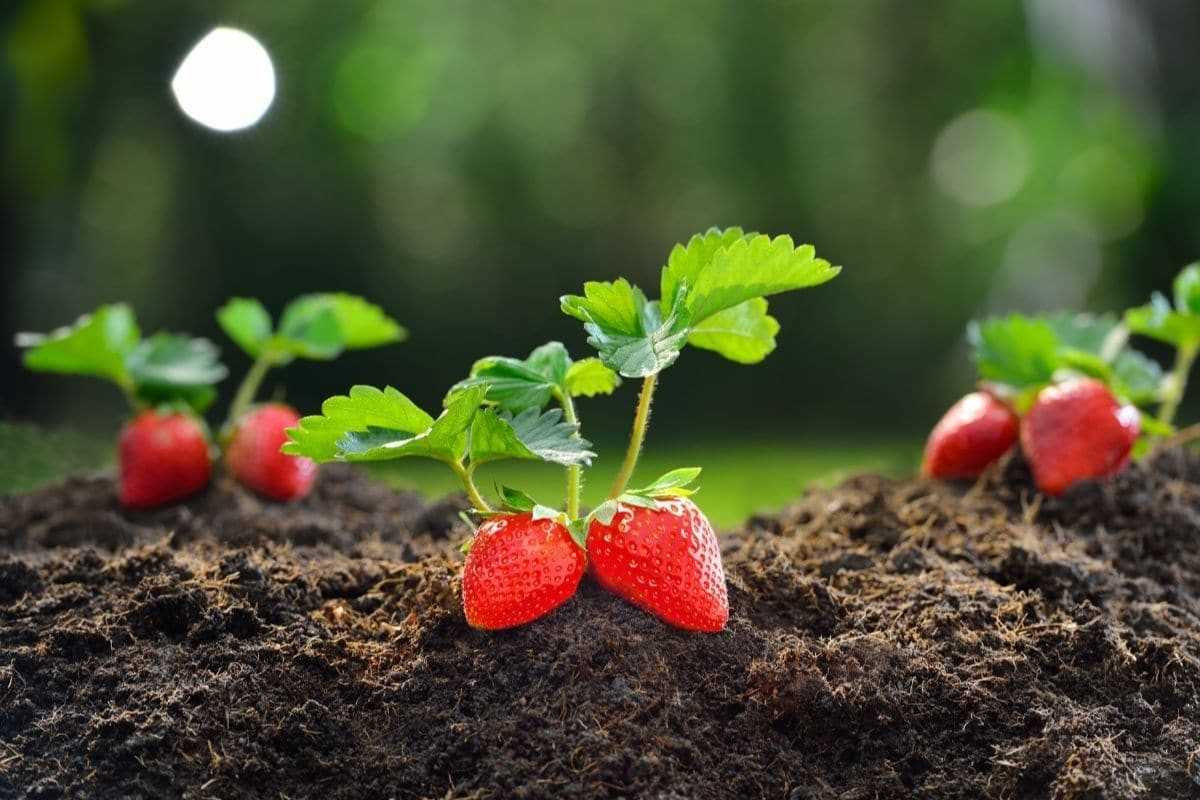
Before planting your strawberries, prepare the soil to ensure optimal conditions for rooting. Start by removing any weeds, rocks, or debris from the planting area. Loosen the soil using a garden fork or tiller to a depth of at least 6 inches. Add organic matter, such as compost or well-rotted manure, to improve drainage and fertility.
3. Planting Depth and Spacing
When planting strawberries, ensure that the crown of the plant is level with the soil surface. Avoid planting too deep, as this can lead to rotting. Space the plants approximately 12-18 inches apart in rows that are 2-3 feet apart. This allows for proper airflow and prevents overcrowding.
4. Watering and Mulching
After planting, water the strawberries thoroughly and provide regular irrigation to keep the soil consistently moist. Mulching can help retain moisture, suppress weeds, and regulate soil temperature. Apply a layer of straw, wood chips, or compost around the plants, ensuring that the crowns are not covered.
5. Fertilizing
To promote healthy rooting, apply a balanced fertilizer high in phosphorus, such as a 10-10-10 or 5-10-5 formula, before planting. This will provide essential nutrients for root development. Avoid over-fertilizing, as excessive nitrogen can inhibit flower and fruit production.
6. Protection from Frost
If frost is a concern in your area, consider using floating row covers or frost blankets to protect your strawberry plants. These covers can help trap heat and prevent frost damage during cold nights. Remove the covers during the day to allow for airflow and pollination.
7. Regular Maintenance
Keep an eye on your strawberry plants throughout the rooting process. Remove any weeds that may compete for nutrients and water. Inspect the plants for pests or diseases and take appropriate measures to control them. Regularly monitor moisture levels and adjust watering as needed.
By following these planting techniques, you can increase the chances of successful rooting for your autumn-planted strawberries. With proper care and maintenance, you’ll be rewarded with a bountiful harvest the following season.
Proper Mulching and Winter Protection
Proper mulching and winter protection are essential for successful strawberry planting in autumn. These practices help to insulate the plants, protect the roots from freezing temperatures, and prevent weed growth. Here are some key tips for proper mulching and winter protection:
1. Apply a Thick Layer of Mulch:
Before the first frost, apply a thick layer of mulch around the strawberry plants. This layer should be around 3-4 inches thick and cover the entire bed. Mulch helps to regulate soil temperature, retain moisture, and prevent weed growth. Suitable mulch materials include straw, pine needles, or wood chips.
2. Avoid Using Plastic for Mulching:
While plastic can be a popular choice for mulching, it is not recommended for strawberries in winter. Plastic can lead to excess moisture around the plants, which can cause rotting and fungal diseases. It is best to stick with natural materials like straw or pine needles.
3. Protect the Crowns:
The crowns of strawberry plants are vulnerable to winter damage. To protect them, mound up the mulch around the base of the plants. This will help to insulate the crowns and prevent freezing. Be careful not to bury the plants too deep, as this can also cause damage.
4. Remove Mulch in Spring:
In spring, when the danger of frost has passed and new growth is beginning, it is important to remove the mulch. Leaving the mulch on for too long can encourage disease and inhibit growth. Carefully rake away the mulch, being careful not to damage any new shoots or leaves.
By following these tips for proper mulching and winter protection, you can ensure the success of your strawberry plants throughout the winter months. With the right care, your plants will be ready to produce abundant berries when the warmer weather arrives.
Essential Watering and Fertilization Tips
Proper watering and fertilization are crucial for the successful growth and wintering of strawberries planted in autumn. Here are some essential tips to ensure your plants get the right amount of water and nutrients:
- Watering:
- Provide consistent moisture:
Strawberries require consistent moisture, especially during the first few weeks after planting. Regularly check the soil moisture and water the plants whenever the top inch of soil feels dry to the touch.
- Avoid overwatering:
Strawberry plants are susceptible to root rot and other diseases if they are overly saturated with water. Avoid overwatering by ensuring proper drainage and not allowing the soil to become waterlogged.
- Use mulch:
Applying a layer of mulch around the base of the strawberry plants can help retain soil moisture and prevent weed growth. Use organic mulch, such as straw or wood chips, and apply it to a depth of 1-2 inches.
- Fertilization:
- Start with a balanced fertilizer:
Before planting, incorporate a balanced fertilizer, such as a 10-10-10 formulation, into the soil. This will provide the necessary nutrients for the initial growth and development of the plants.
- Apply additional fertilizer during the growing season:
As the strawberry plants continue to grow, they will benefit from additional fertilization. Apply a balanced slow-release fertilizer or a compost tea every 4-6 weeks to provide a continuous source of nutrients.
- Monitor nutrient deficiencies:
Keep an eye out for signs of nutrient deficiencies, such as yellowing leaves or stunted growth. If deficiencies are observed, adjust the fertilizer application accordingly and provide the necessary nutrients to the plants.
By following these watering and fertilization tips, you can ensure healthy growth and wintering for your autumn-planted strawberries. Remember to maintain consistent moisture and supply the necessary nutrients to help your plants thrive.
Pruning and Trimming in Autumn
Pruning and trimming your strawberry plants in autumn is an essential part of their care and maintenance. It helps to promote healthy growth, improve air circulation, and prevent disease. Here are some key tips for pruning and trimming your strawberry plants in autumn:
1. Remove Dead Leaves and Runners
Start by removing any dead leaves and runners from your strawberry plants. Dead leaves can harbor disease and pests, so it’s important to remove them to prevent the spread of infection. Runners are long stems that grow out from the main plant and can steal nutrients from the mother plant. Removing them helps to redirect energy and resources back into the main plant.
2. Trim Excess Foliage
Next, trim any excess foliage from your strawberry plants. This allows more sunlight to reach the lower leaves and promotes better air circulation, which in turn helps to prevent disease. Trim the leaves just above the crown of the plant, being careful not to cut into the crown itself, as this can damage the plant.
3. Thin Out Plants
If your strawberry plants are overcrowded, thin them out by removing some of the smaller, weaker plants. This allows the remaining plants to have more space, nutrients, and sunlight to thrive. Aim to have about 4-6 inches of space between each plant.
4. Mulch with Straw
After pruning and trimming, mulch around your strawberry plants with straw. This helps to protect the plants from the cold weather and also prevents weed growth. Spread a layer of straw about 2-3 inches thick around the base of the plants, and be sure to keep it away from the crown to avoid rotting.
By following these pruning and trimming tips, you’ll ensure that your strawberry plants are in the best possible condition for wintering and will have a head start for the following growing season. Happy gardening!
Preventing Pests and Diseases
Pests and diseases can be a major concern when planting strawberries in autumn. Here are some key tips to help prevent and control common issues:
- Choose disease-resistant varieties: When selecting strawberry plants, opt for varieties that are known to be resistant to common diseases. This can help reduce the risk of plant infections and ensure a healthier crop.
- Practice crop rotation: Avoid planting strawberries in the same spot year after year. Rotate your crops, planting strawberries in different areas of your garden each season. This reduces the buildup of pests and diseases in the soil.
- Provide proper spacing: Give your strawberry plants enough space to grow and breathe. Crowded plants are more susceptible to diseases, as airflow is restricted. Aim for a 12-18 inch spacing between plants.
- Clean gardening tools: Sanitize your gardening tools regularly to prevent the spread of diseases. Clean tools after each use and avoid sharing tools between different plants or areas of your garden.
- Remove infected plants: If you notice any signs of disease on your strawberry plants, such as wilting, discoloration, or lesions, remove and destroy the affected plants immediately. This prevents the spread of the disease to other plants.
- Maintain good hygiene: Keep the surrounding area clean and free from weeds, as they can harbor pests and diseases. Regularly remove any dead leaves, debris, or fallen fruits to discourage pests and reduce disease risk.
- Consider natural pest control methods: Use organic pest control methods, such as companion planting, beneficial insects, or homemade sprays, to manage pests without the use of harmful chemicals.
- Monitor regularly: Watch your strawberry plants closely for any signs of pests or diseases. Early detection can help prevent the spread and minimize damage. Regularly inspect the leaves, stems, and fruits of your plants.
By following these tips and taking proactive measures, you can help prevent pests and diseases from affecting your strawberry plants, ensuring a successful harvest in the coming seasons.
Harvesting and Enjoying the Fruits of Your Labor
After patiently waiting for your strawberry plants to root and winter successfully, it’s time to finally enjoy the fruits of your labor. Here are some key tips for harvesting and savoring your homegrown strawberries:
1. Harvesting:
- Strawberries are fully ripened and ready to be picked when they are bright red and have a sweet aroma. Avoid harvesting them when they are still green or white, as they won’t be as flavorful.
- Gently twist the strawberries off the plant, making sure to leave the green stem intact. This will help the fruit last longer after harvesting.
- Pick strawberries in the morning when it’s cooler, as they tend to be juicier and sweeter at this time.
2. Storing:
- If you don’t plan on using your strawberries immediately, store them in the fridge to help extend their shelf life. Place them in a single layer on a paper towel-lined tray or container.
- Do not wash the strawberries until you are ready to use them, as excess moisture can cause them to spoil more quickly.
3. Enjoying:
- There are endless ways to enjoy freshly picked strawberries. Eat them plain, add them to salads or desserts, make strawberry jam, or even use them to top pancakes or waffles.
- Consider inviting friends and family over for a strawberry-tasting party or share your bounty with neighbors to spread the joy of homegrown strawberries.
4. Caring for Your Plants:
- After harvesting, remember to remove any dead or yellowing leaves from your strawberry plants to keep them healthy.
- Continue watering and providing adequate sunlight to help the plants thrive and produce more berries in the future.
Following these tips will ensure that you make the most of your strawberry harvest and enjoy the delicious flavor of your own homegrown fruits. Get creative with your recipes and share the joy of freshly picked strawberries with those around you.
Question-answer:
Is it possible to plant strawberries in autumn?
Yes, it is possible to plant strawberries in autumn. In fact, autumn is a great time to plant strawberries because the cooler temperatures and moist soil provide optimal conditions for rooting and establishment.
What are the key tips for successful rooting of strawberries in autumn?
There are four key tips for successful rooting of strawberries in autumn. Firstly, choose a well-draining location with full sunlight. Secondly, prepare the soil by removing weeds and adding organic matter. Thirdly, plant the strawberries at the right depth, ensuring the crown is level with or slightly above the soil surface. Lastly, water the strawberries after planting and provide regular watering throughout the winter.
How should I prepare the soil for planting strawberries in autumn?
To prepare the soil for planting strawberries in autumn, start by removing any weeds or grass from the area. Then, incorporate organic matter such as compost or well-rotted manure into the soil to improve its fertility and drainage. It is also a good idea to perform a soil test to determine the pH level and make any necessary adjustments.
Should I water the strawberries after planting in autumn?
Yes, it is important to water the strawberries after planting in autumn. This will help settle the soil around the roots and promote root establishment. After planting, water the strawberries thoroughly and continue to provide regular watering throughout the winter, as necessary.
What can I do to protect strawberries during the winter?
To protect strawberries during the winter, you can apply a thick layer of mulch around the plants. This will help insulate the roots and prevent frost damage. Additionally, consider covering the plants with a row cover or frost blanket during periods of extreme cold. Remember to remove the coverings during warmer days to allow for air circulation.







